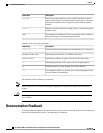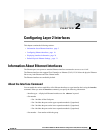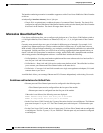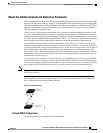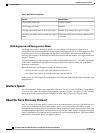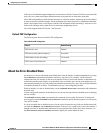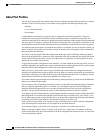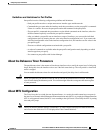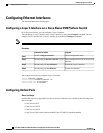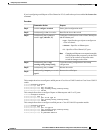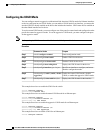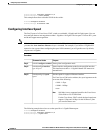
Table 2: UDLD Default Configuration
Default ValueFeature
Globally disabledUDLD global enable state
DisabledUDLD aggressive mode
Enabled on all Ethernet fiber-optic LAN portsUDLD per-port enable state for fiber-optic media
Disabled on all Ethernet 10/100 and 1000BASE-TX
LAN ports
UDLD per-port enable state for twisted-pair (copper)
media
UDLD Aggressive and Nonaggressive Modes
UDLD aggressive mode is disabled by default. You can configure UDLD aggressive mode only on
point-to-point links between network devices that support UDLD aggressive mode. If UDLD aggressive mode
is enabled, when a port on a bidirectional link that has a UDLD neighbor relationship established stops
receiving UDLD frames, UDLD tries to reestablish the connection with the neighbor. After eight failed retries,
the port is disabled.
To prevent spanning tree loops, nonaggressive UDLD with the default interval of 15 seconds is fast enough
to shut down a unidirectional link before a blocking port transitions to the forwarding state (with default
spanning tree parameters).
When you enable the UDLD aggressive mode, the following occurs:
• One side of a link has a port stuck (both transmission and receive)
• One side of a link remains up while the other side of the link is down
In these cases, the UDLD aggressive mode disables one of the ports on the link, which prevents traffic from
being discarded.
Interface Speed
The 5596T switch has 48 base board ports and 3 GEM slots. The first 32 ports are 10GBase-T ports the last
16 ports are SFP+ ports. The 10GBase-T ports support a speed of 1-Gigabit, 10-Gigabit, or Auto. The Auto
setting automatically negotiates with the link parser to select either 1-Gigabit or 10-Gigabit speed.
About the Cisco Discovery Protocol
The Cisco Discovery Protocol (CDP) is a device discovery protocol that runs over Layer 2 (the data link layer)
on all Cisco-manufactured devices (routers, bridges, access servers, and switches) and allows network
management applications to discover Cisco devices that are neighbors of already known devices. With CDP,
network management applications can learn the device type and the Simple Network Management Protocol
(SNMP) agent address of neighboring devices running lower-layer, transparent protocols. This feature enables
applications to send SNMP queries to neighboring devices.
Cisco Nexus 5000 Series NX-OS Interfaces Configuration Guide, Release 5.2(1)N1(1)
6 78-26881-OL
Configuring Layer 2 Interfaces
Interface Speed



